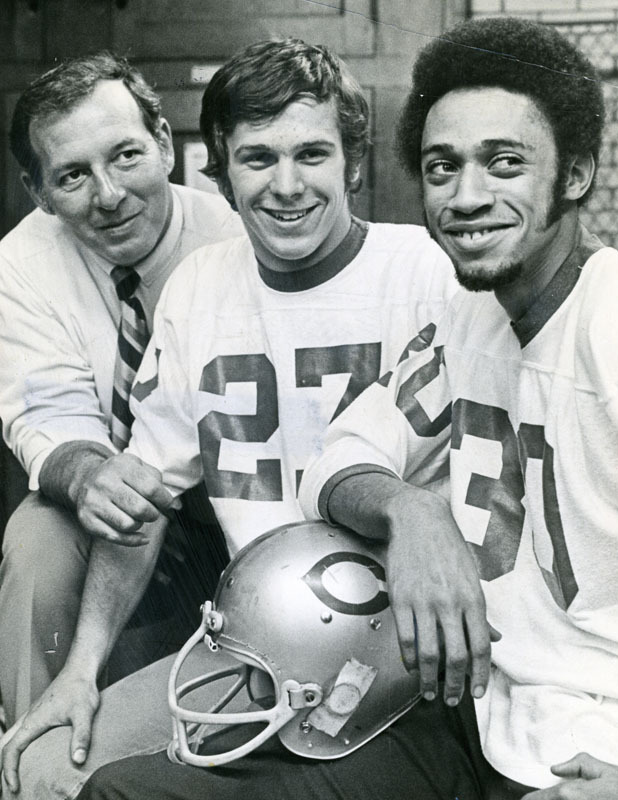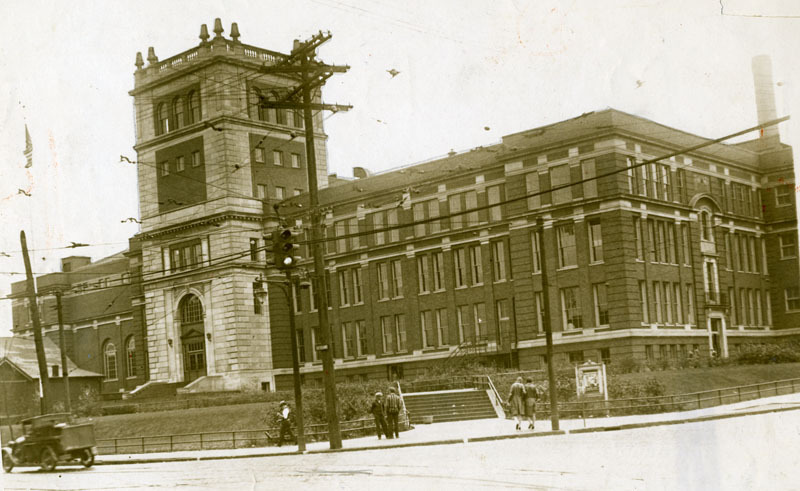Collinwood High School Riots

On the morning of April 6, 1970, 350 to 400 whites, mostly students, gathered outside of Collinwood High School and began throwing rocks at the school, breaking 56 windows. Teachers told the 200 black students who attended school that day to go to the third-floor cafeteria for their protection. At 10:30 a.m., the white mob entered the school and went to the second floor. They damaged furniture, broke windows, and threw clubs at the school's music director. Afraid, the black students began breaking off the legs of chairs to arm themselves and blocking the stairs leading to the third floor with tables and chairs. Luckily, the white students left the school and the black students were escorted to buses to take them home. Teachers and policemen had to form a line in order to block the whites from attacking the students who were boarding. This was just one of many serious, racially motivated confrontations that took place in Collinwood over a fifteen-year period.
The first major incidents at Collinwood High School occurred in 1965, the same time the rest of the country was seeing racial clashes in schools. After the Supreme Court ruled that racial segregation in public schools was unconstitutional in the 1954 case of Brown v. Board of Education of Topeka, many schools in the South became places of protests and violence. Northern schools saw the same disturbances when they began to make efforts toward greater integration. In the case of Collinwood, industrialization not only increased its population, but also its diversity. According to a Cleveland Plain Dealer columnist, "with the passage of each year, the western fringes of the Collinwood area [were] being occupied by the Negro overflow from Glenville." This change in demographics, coupled with civil rights demonstrations, caused racial tensions to surface and intensify in Collinwood, particularly at the neighborhood's high school.
Finally, after fifteen years of violence in the country's schools, radical measures were being taken in some schools and by the federal government to stop the dangerous episodes once and for all. In a New York school, a committee was formed by the mayor to prevent future violence. Other schools suspended or expelled large groups of students for any racial confrontations and hired security force guards to keep the peace. In April 1969, Senator Robert C. Byrd asked Congress to pass a law that would make the disruption of any school that received federal aid a federal crime.
Cleveland's mayor Carl Stokes was prompted to follow these examples after the dangerous episode of April 1970. The mayor kept the school open but protected it with policemen backed by National Guard units in case a severe situation should arise. Nevertheless, Collinwood High School was still the scene of other racial clashes, the worst occurring in the fall of 1974. Three black students were stabbed in September of that year, and the next month another student was fatally shot by a sixteen-year-old white student. After these disturbing incidents, the racial violence at the Collinwood school began to dwindle.
Audio
Images







